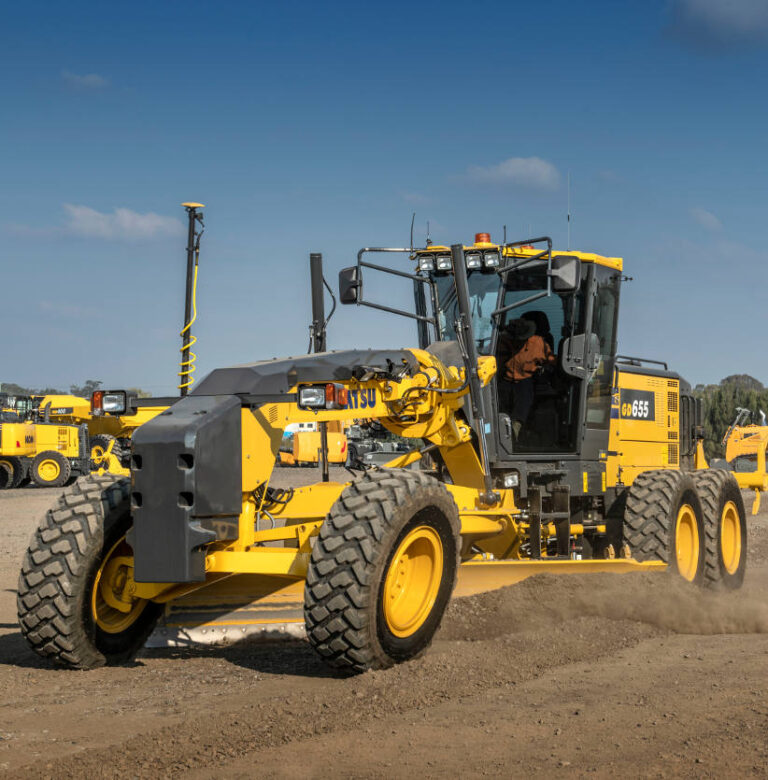After years of turbulence following the COVID-19 pandemic, the used truck and yellow plant markets in Australia are beginning to stabilise in 2025—but Bruce Connors, Director – Industrial at Pickles, warns that the landscape is still shifting beneath our feet.
Speaking to Fleet News Group, Connors offered insights from the front line of resale activity across the country. While demand for quality used stock remains, factors like weather events, regional infrastructure delays and rising new prices continue to influence the market.
New vehicle prices anchor higher used values
According to Connors, the extreme shortages of 2021–22 and the ballooning order books for fleet operators like SG Fleet drove values up sharply. “Between 10 and 15% price rise per year, if not more,” was typical during the period, and that price inflation has reset the market’s expectations.
“[Used] pricing is not too bad,” said Connors. “But there is a lot of pain in line haul, [and] subcontractors… especially if they’re moving away from that sort of traditional government, semi-government operating lease.”
While some segments like older line-haul trucks (7–10 years) have seen significant price corrections, late-model low-kilometre trucks are holding their value. Connors doesn’t expect prices to return to pre-COVID levels “unless there’s a recession or something significant,” largely because new prices have increased so much.
Fleet managers wondering whether historical depreciation rates still apply may be surprised to hear that “as a percentage, it’s similar [to before COVID], it’s probably sitting a little bit higher,” Connors said.
High-value stock still includes Japanese trucks and council assets
One clear trend is the ongoing strength of Japanese-brand trucks, especially those coming out of government fleets.
“If it’s a Japanese truck coming out of a government department, nothing’s changed. They’re still worth gold. People still want them. People will still pay a premium,” Connors noted.
This is consistent with a broader market preference for quality and known provenance. “When we come to sell it… we ask for that service history so we can advertise it. That just backs up our tagline that if it’s government, if it’s fleet, then it has been maintained.”
Yellow plant: demand shifts with weather and infrastructure cycles
Yellow goods are experiencing more regionalised disruption. Connors noted that Queensland and parts of northern NSW are struggling due to sustained wet weather. “They’re not getting paid, but they’re still having to pay their finance contracts,” he said, warning of “a world of pain” if conditions don’t dry out soon.
The yellow plant market has also changed in composition. “The number of backhoes sold into the marketplace today is probably only 10% of what was sold 20 years ago,” Connors said, due to machines like skid steers and mini-excavators offering more flexibility and attachment options. These units, especially up to 15 tonnes, are still attracting good demand.
Despite expectations that graders would boom due to flood-damaged roads, “they probably sat flat,” Connors said. However, he added, “they certainly haven’t gone back in the market.”
In contrast, local government plant tends to be held longer with lower hours, while private contractors and civil construction fleets often turn over machines faster with higher utilisation. Importantly, lower utilisation and older age don’t necessarily mean lower resale—condition and presentation remain the key factors.
What makes and models are in high demand?
In the truck market, Connors said there’s still strong loyalty to top-tier brands: “Kenworth is very strong. Volvo is very strong. So Volvo and Mack… have the market.”
Fuel economy and emission technology are increasingly influencing buying habits too. “The fuel burn that’s come with some of these new Euro motors has certainly driven people’s buying habits,” he said.
That said, Connors warned that Euro 6 models may be slow to arrive in volume. “It’s going to take a long time for that to come on board. In the meantime, we feel that the prime mover market is going to hold up, and in some cases go up higher in value, because people are going to be waiting for the Euro 6 trucks.”
In plant equipment, Caterpillar continues to dominate in excavators, graders and skid steers, alongside Japanese brands like Komatsu and Hitachi. Newer entrants like Case are gaining traction in certain segments, offering slightly cheaper alternatives.
When it comes to skid steers, there’s a wide field of competition: “Just about every brand builds a skid steer,” Connors said. Buyers now look closely at hydraulic performance to support a growing range of attachments—from mulchers and slashers to graders and brooms.
Tips for maximising resale value
Fleet Managers looking to improve end-of-life returns should focus on:
- Maintenance records: “There’s a lot more programs out there now… we ask for that service history… that just backs up [our] tagline,” said Connors.
- Presentation: Clean, tidy machines create confidence in the buyer and help hold value.
- Brand selection: Mainstream brands still command stronger resale, particularly where parts and service networks are critical—especially in regional areas.
- Right-sizing utilisation: Machines with reasonable hours for their age attract more buyer interest.
As for lower-cost alternatives like Chinese brands, Connors acknowledged their growing presence in the new market but warned that resale and aftersales support remain weak: “It’s cheap new, and it’s probably even cheaper secondhand.”
Whether you’re managing a council fleet or civil plant operation, Connors’ advice is clear: understand your market, invest in maintenance, and don’t cut corners on brand or support—because today’s secondhand buyers are just as discerning as they’ve ever been.







